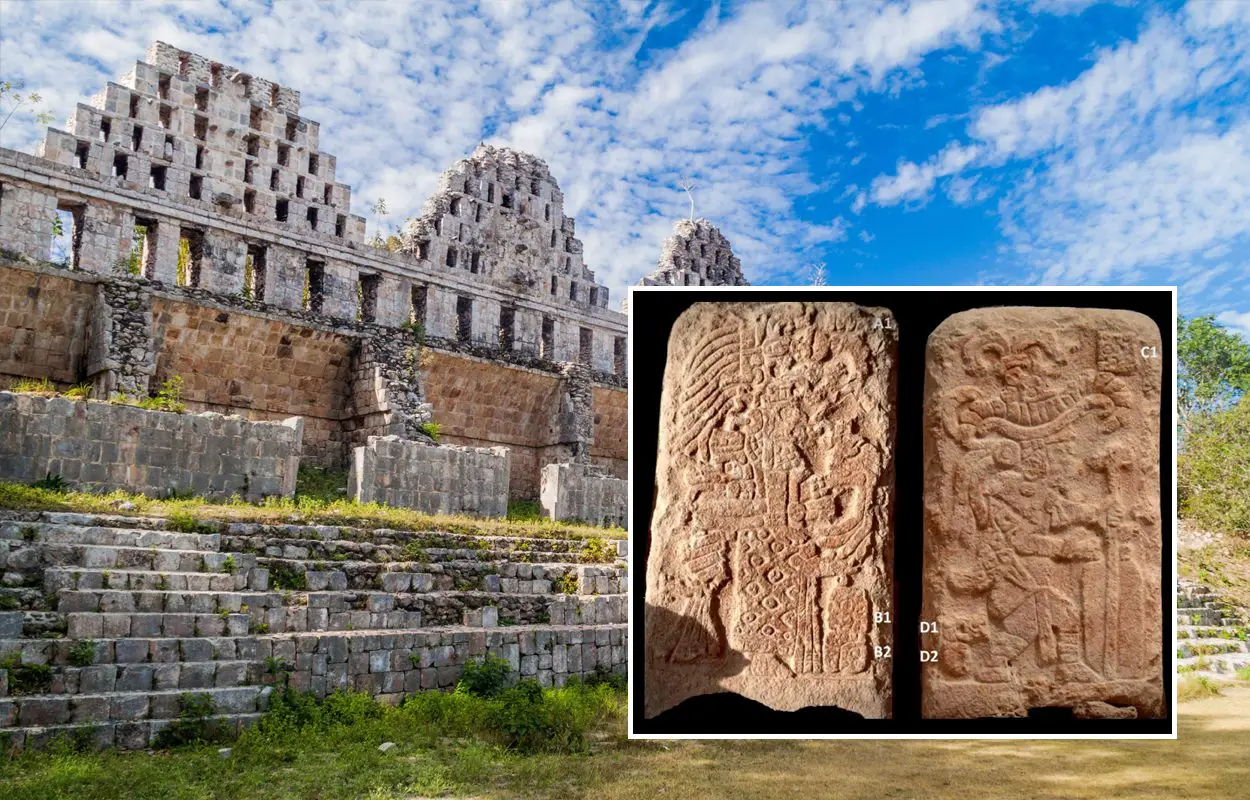Archaeologists from the National Institute of Anthropology and History (INAH) have uncovered a dual Maya stela at the city of Uxmal.
Uxmal was a Maya polity, located in the Puuc region of the eastern Yucatán Peninsula, Mexico. The present name seems to derive from Oxmal, meaning “three times built.”
The site is the most important representative of the Puuc architectural style, which flourished in the Late Classic Period around AD 600–900.
Characteristics of the Puuc style include limestone construction, often with smooth wall surfaces; plaster (stucco) finishes; masks and other representations of the rain god Chac (Chaac); and the prevalence of styling along horizontal lines.
According to Maya chronicles, the city was founded around AD 500, emerging as one of the most power Maya polities in the western Yucatán.
The stele was uncovered in a sunken patio in an architectural complex known as El Palomar, meaning “Pigeon-house” or “the Dove Cotes” which is part of a quadrangle complex of four palaces surrounding a courtyard of which only the northern front remained. The name derives from the cresting which reminded early explorers of a pigeon house.
The stele is carved on both sides, depicting a female deity on the north side, holding a quetzal in her left hand, and wearing a pectoral with three rows of pearls, bracelets, and a patterned skirt.
On the south side is an image of a male deity, wearing a wide-brimmed headdress adorned with feathers and what appears to be an owl’s head. The figure is also wearing a loincloth, a cape, and is holding a cane in his left hand.
The researchers believe female and male deities represent the duality of life and demise, since these representations are frequent within the Puuc and Chenes cultural areas, within the south of the state and within the Yucatan peninsula.
Header Image Credit : INAH





